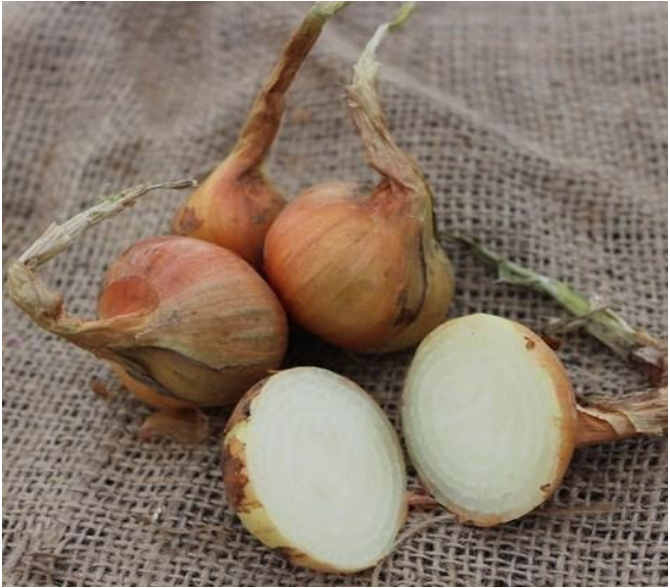Crop: Allium cepa L. (Onion)
The potato-onion ‘Leksand’ dates back to the early 1900’s. Stores very well at room temperature and in dry conditions. Not so large, but very tasty. It produces six-seven bulbs per seed onion.
Cultivation System: ND.
Geographical Information
Country: Sweden
In the area between Leksand (62.725, 15.000) and Rättvik (60.886, 15.119), province of Dalarna (South Central Sweden). No information is available as regards current growers (today allegedly c. 80) either concerning their distribution, or their acreages.
Farmer(s) description:
The following is a quote from Lillie Landgren’s book Our garden from 1916.
‘Cultivation of shallots and in particular ‘Leksand’, is excellent here and seems to have less demands on soil than other onions and can also develop [during] summers when other onions fail. Put 4 to 5 rows on bed, 18 cm between the bulbs. A hole is made with the hand, a small onion is stuck, so that the upper part comes in the surface. This soon develops and forms a whole lot of bulbs, which are harvested in the fall. Stored, as any other onion, dry and cool; can withstand 2-5 degrees of frost, but the frozen onion should not be touched or rapidly thawed, as it does not stay longer. Hardy, fine in taste, durable’.
Propagation system: Clonal
Multiplication procedures and consequences on landrace diversity:Onion is a bi-annual and cross-pollinated species. For multiplication, enough distance to other varieties is needed. Traditionally, Leksland onions are planted on 18 May (name day Erik) and lifted on 10 August (name day Lars).
Management plan existence:ND
Added Values
Local and, possibly, regional. Marketed under the trademark Green heritage®.
Others (e.g. commercial/geographical brands or special traits):Chefs have indicated a pronounced interest in potato onion ‘Leksand’ due to its storage and gastronomic qualities.
‘Leksand’ was registered on December 2017 on the Swedish official list of varieties as an amateur variety. Registration is effective until December the 31st 2027.
The interest among local growers and private gardeners seem to give sufficient support to its long-term conservation and maintenance.
Case study provided by the Swedish Board of Agriculture, Sweden (reference person: Jens Weibull).
ND.
